An introduction to African music archives
Colonialism had an impact in the way Africa was studied and documented. The creation of music archives corresponded with the increase of ethnographic study of 'tribal' societies. These studies were led by the disciplines of anthropology and ethnomusicology, which were beginning to establish, in academic terms, a discourse of African life and music.[i] (see Mudimbe 1991; Kofi Agawu).
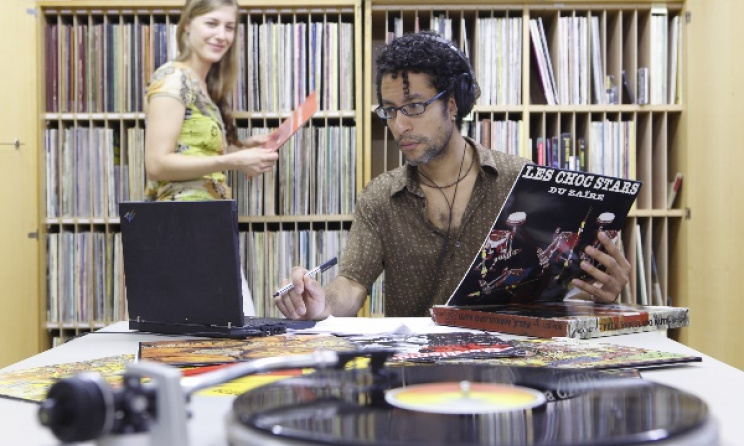 Inside the African Music Archives (AMA) in Germany. Photo: Thomas Hartmann / www.uni-mainz.de
Inside the African Music Archives (AMA) in Germany. Photo: Thomas Hartmann / www.uni-mainz.de
Foremost among those who led the race for preserving and studying African music was Devonshire-born Hugh Tracey. Tracey began taking an interest in African music in 1921, during his early days in Zimbabwe, where he had come to farm tobacco with his brother. Living with the Karanga people in Zimbabwe, Tracey was immediately convinced of the importance of music in the lives of the people. This was despite the dismissive attitude of the colonial settler community in the area. He relates his experience as follows:
“The history of this collection of authentic African music, songs, legends and stories is in many ways a personal one. It dates back to the early 1920s when I first sang and wrote down the words of African songs I heard in the tobacco fields of Southern Rhodesia. Several years later (1929), I made a number of discs with a visiting recording company (Columbia, London) when I took 14 young Karanga men with me to record in Johannesburg, 500 miles south. These were the first items of indigenous Rhodesian music to be recorded and published. Shortly afterwards, several of these items were used by John Hammond of CBS at Carnegie Hall in New York as preliminary music to his program on the historic occasion when he presented on the stage, for the first time in that city, the music and the personnel of a number of southern Negro bands.”[ii]
From Tracey’s recollection, it becomes clear that the collection and archiving of music in Africa was not only an academic exercise, but was strongly linked with commercial interests of recording companies.
Between the First and Second World Wars, the United Kingdom was a major centre for recording and manufacture of gramophone records. But from the onset of the enterprise in the 1890s, recording was understood as a global phenomenon. There was an interest to record sounds from all over the British Empire. In 1912, recordings of Swazi chiefs who visited London in the early 1900s were distributed and sold internationally. In addition, recording technicians were sent on expeditions to capture Afrikaans music and indigenous music that were advertised and sold as ‘Native Records’ to global audiences.[iii]
As recordings began to reach wide audiences, scholars like Austrian Erich Hornbostel (who had never been to Africa) began to use these recordings to construct a theory about African and oriental music. He created a system of classifying musical instruments based on the sounds it produced. Following Hornbostel’s investigation, scientific collections of music archives began to appear. Most notably, the Lautarchiv in Berlin (some of whose sound archives were captured from prisoners of war in German concentration camps during the First World War) and the Kirby Collection (now housed at the University of Cape Town’s College of Music and some parts at Museum Africa).
Archiving of African music increasingly took on a scientific approach, but these were inspired by commercial interests as companies like the British Gramophone Company and subsequently African-based companies like Gallo Music, who began by recording music performed by miners from all over Southern Africa (including Mozambique, Malawi, Zambia, to mention a few) who would congregate at the Witwatersrand gold mines in the 1920s and 1930s[iv]. Gallo eventually employed Hugh Tracey for this role. He became the leader of African music archiving and many of his efforts are represented in the International Library of Africa Music (ILAM), housed at Rhodes University in Grahamstown.
These companies benefited immensely from profit streams emerging out of archival recordings of music. Sometimes, in the process, they exploited the musicians. The best-known example of this is Solomon Linda's song ‘Mbube’, which was recorded by Gallo in 1939 and became so popular that by the end of the 1940s it had sold over 100 000 records, for which Linda received a mere 10 shillings. ‘Mbube’ was then re-recorded by a US singing group called The Weavers, who changed the title to ‘Wimoweh’, which became a Top 20 hit in America. The track was also used in Walt Disney’s Lion King movie, under the title ‘The Lion Sleeps Tonight’. This was all to the enrichment of the recording company, as Linda died a poor man in 1962.
The British Broadcasting Corporation (BBC), established in the 1920s, had various satellite broadcasting places on the continent, as early as 1928 in Kenya, which was integrated into the local Kenya Broadcasting Corporation (KBC) after independence. It too collected recording of local musics. The South African Broadcasting Corporation (SABC), which was formed in 1936, recorded songs and kept an archive. However, most of the sounds relating to black people were poorly regarded, and many were lost when the SABC relocated to its new head office in Auckland Park (Johannesburg) in the 1980s. This was in line with the secrecy of the apartheid state and its unwillingness to cherish black cultures.[v] Similarly structured national broadcasting corporations exist in numerous African countries, including Nigeria, Ghana, Namibia, Zimbabwe, Tanzania, Egypt, Malawi and Zambia, each with its own archive.
Why should we archive music?
Historically, the prevailing discourse on the importance of archiving music in Africa was about vanishing cultures. It was believed that African music would become ‘contaminated’ by Western influences, due to modern lifestyles[vi]. This was clearly a paternalist view that strove to erase global trends of multi-culturalism.
This cannot be our motive for archiving music today, because we can now agree that we are at once African but also citizens of a global humanity. Two musicians singing on the streets of Lagos, for example, may decide to record a track and post it on Facebook. Immediately the circulation of that music and its ability to cross-influence is given a global horizon. What an opportunity this brings, for tracking those transnational movements of music, as we discover one another! Any archival attempt today would have to take seriously the advent of digital technologies and the possibilities they provide for creating and preserving music, and for re-visiting older archival practices.
Already these are underway and can be seen in the example of the Somali expatriate community in London. The Somali community in the King’s Cross of area of London are neighbours with the British Library, where many archival recordings of Somalian music are kept. Their close proximity has created the opportunity for the exchange of ideas and information about the British Library’s historical records, as well as the creation of new digital recordings of Somalian music of today. This has enabled Somalians to respond to the information constructed about themselves by ethnomusicologists.[vii]
Similarly, on the African continent, calls are being made for the repatriation of sound archives that are stored abroad. This is the case in Uganda, where people are asking for recordings of music made by Klaus Wachsmann in the 1940s and 1950s, which are stored in London, to be returned to Uganda.[viii]
The range of motives for archiving has widened from just ‘preserving vanishing cultures’ to issues of social justice. In the case of Ethiopian Harari music collections, communal approaches have been explored. Observers have noted how integrating local role-players in collection music and manuscripts of Ethiopian ritual songs can lead to more sustainable management of archives and increase accessibility in order to engage audiences.[ix]
Future outlook
If we assume it is important to archive music, then the challenge remains how to increase access to technology in Africa. Governments and institutions must invest in infrastructure and skills necessary to maintain delicate collections.
In October 2003, the General Conference of UNESCO adopted the Convention for the Safeguarding of the Intangible Cultural Heritage (ICH). This document “emerged out of UNESCO’s quest to promote the functions and values of cultural expressions and practices, and of monuments and sites. By signing the Convention, states commit to ensuring the safeguarding of ICH within their territories, as well as to identify and define this living heritage through the participation of communities, groups and relevant non-state organizations.”[x]
African states need to be motivated to adhere to international standards for protecting and promoting musical cultural heritage. The recent report released by the Archival Platform, on the ‘State of the Archives: An analysis of South Africa’s National Archival System’ is an excellent example of this civic motivation, and can be used elsewhere on the continent as a best-practice model.
Lastly, private recording companies have benefitted tremendously from recordings of local music, as illustrated in the case of Solomon Linda. They too must be challenged to fund archiving initiatives, as a way of restoring dignity to those communities whose folk songs they commercialized.
[i] See Mudimbe, VY (1991). The Invention of Africa. Indiana: Bloomington Press; Agawu, Victor Kofi (2003). Representing African Music. New York: Routledge. [ii] International Library of African Music, Archives. [iii] Cowley, John (1994). “Recordings in London of African and West Indian Music in the 1920s and 1930s,” Musical Traditions. 12, 13-26. [iv] See Allen, Lara (2007). “Preserving a Nation’s Heritage: The Gallo Music Archive and South African Popular Music,” Fontes Artis Musicae. 54/3, 263-279. [v] Erlmann, Veit (1991). African stars: Studies in black South African performance. Chicago: University of Chicago Press [vi] Tracey, Hugh (1954). “The State of Folk Music in Bantu Africa,” International Folk Music Journal, 6, 32-36. For an analysis of this see Mhlambi, Thokozani Ndumiso (2008). The Early Years of Black Radio Broadcasting in South Africa: A Critical Reflection on the Making of Ukhozi FM. Mphil. thesis, University of Cape Town; [vii] Brinkhurst, Emma (2012). “Archives and Access: Reaching Out to the Somali Community of London’s King’s Cross,” Ethnomusicology Forum, 21/2, 243-258. [viii] Nannyonga-Tamasuza, Sylvia et al (2012). “The Audible Future: Reimagining the Role of Sound Archives and Sound Repatriation in Uganda,” Ethnomusicology, 56/2, 206-233. [ix] Tarsitani, Belle Asante & Tarsitani, Simone (2010). “Integrating Local Knowledge in Ethiopian Archives: Music and Manuscripts in the Collection of Abdulahi Ali Sherif,” African Study Monographs, 41, 5-18. [x] Mhlambi, Thokozani (2009). Report on The Safeguarding of the Intangible Cultural Heritage in Southern Africa Meeting in Windhoek, 17th -18th November 2009, for the Archival Platform.













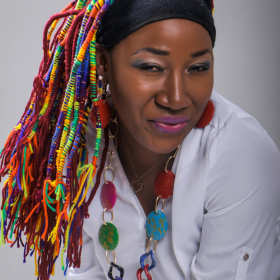
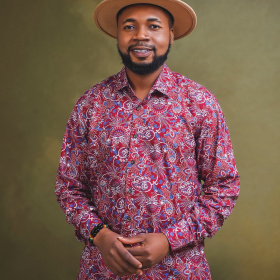






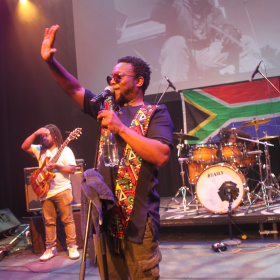

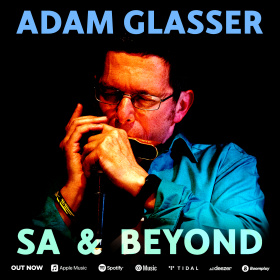



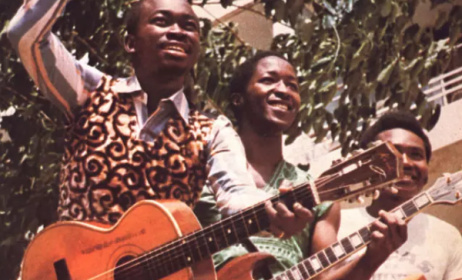







Comments
Log in or register to post comments